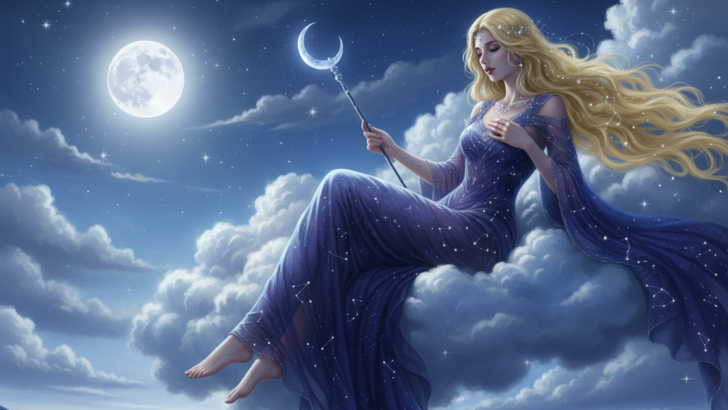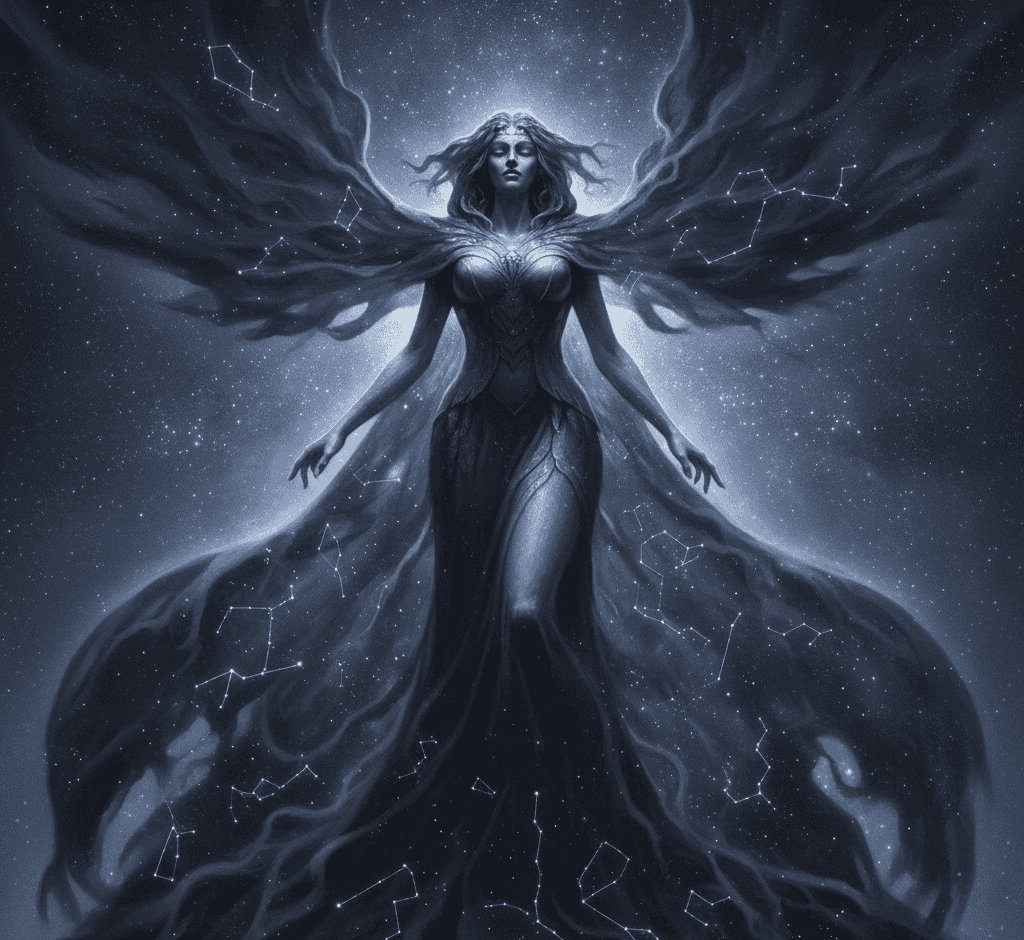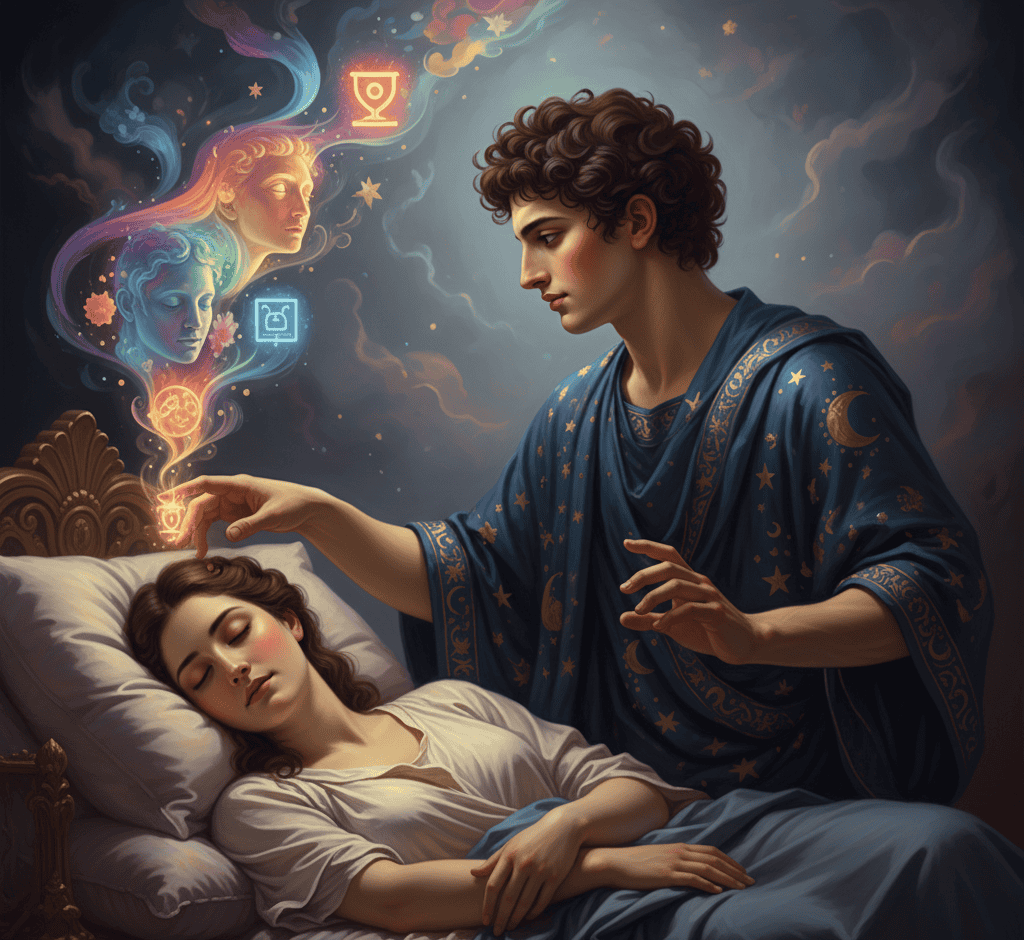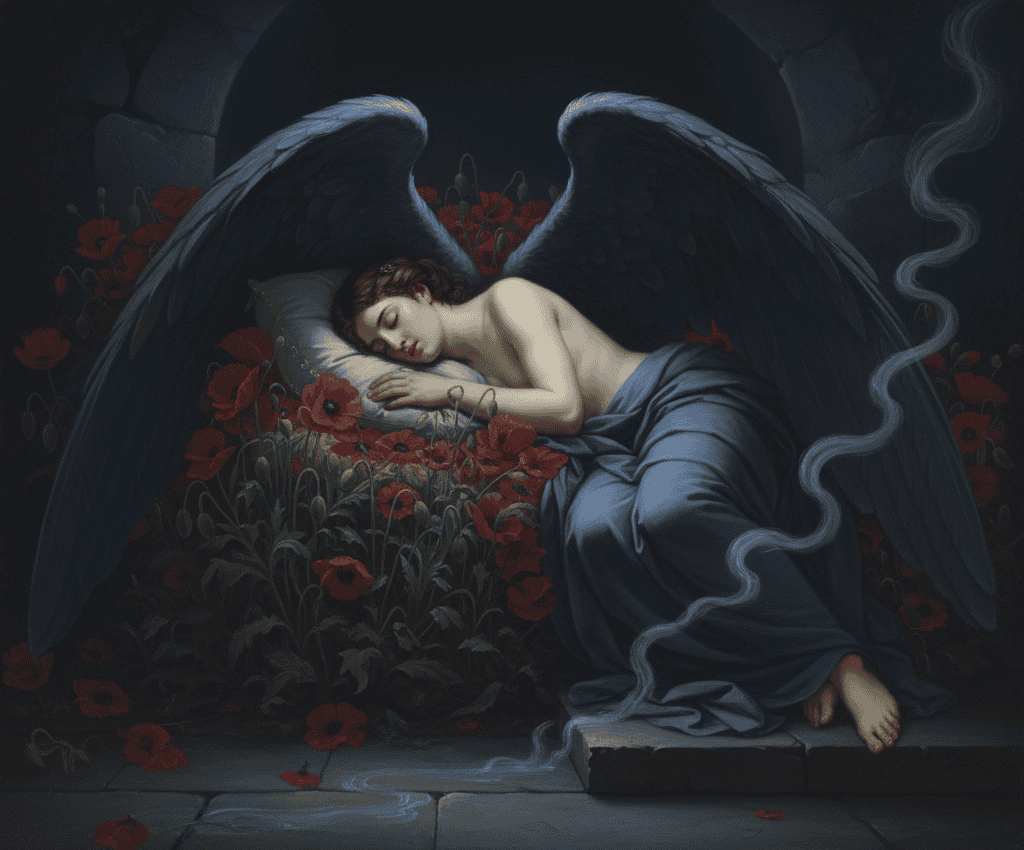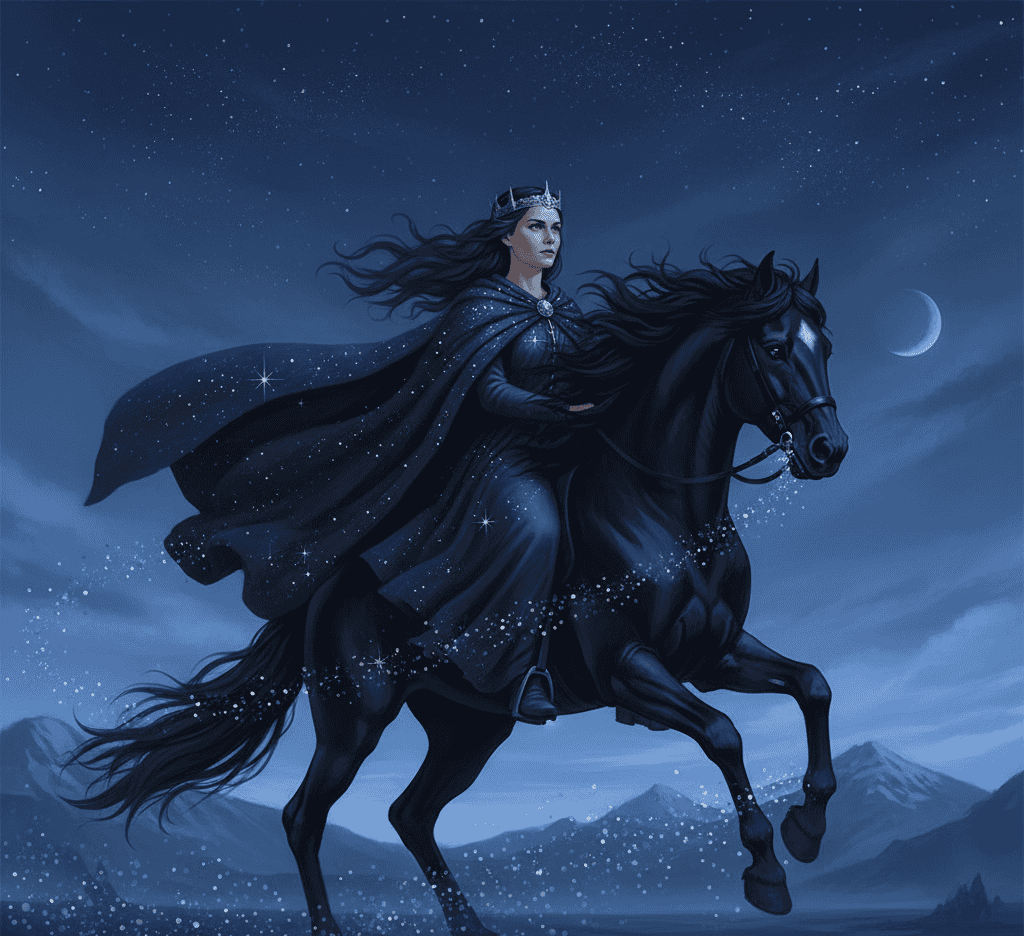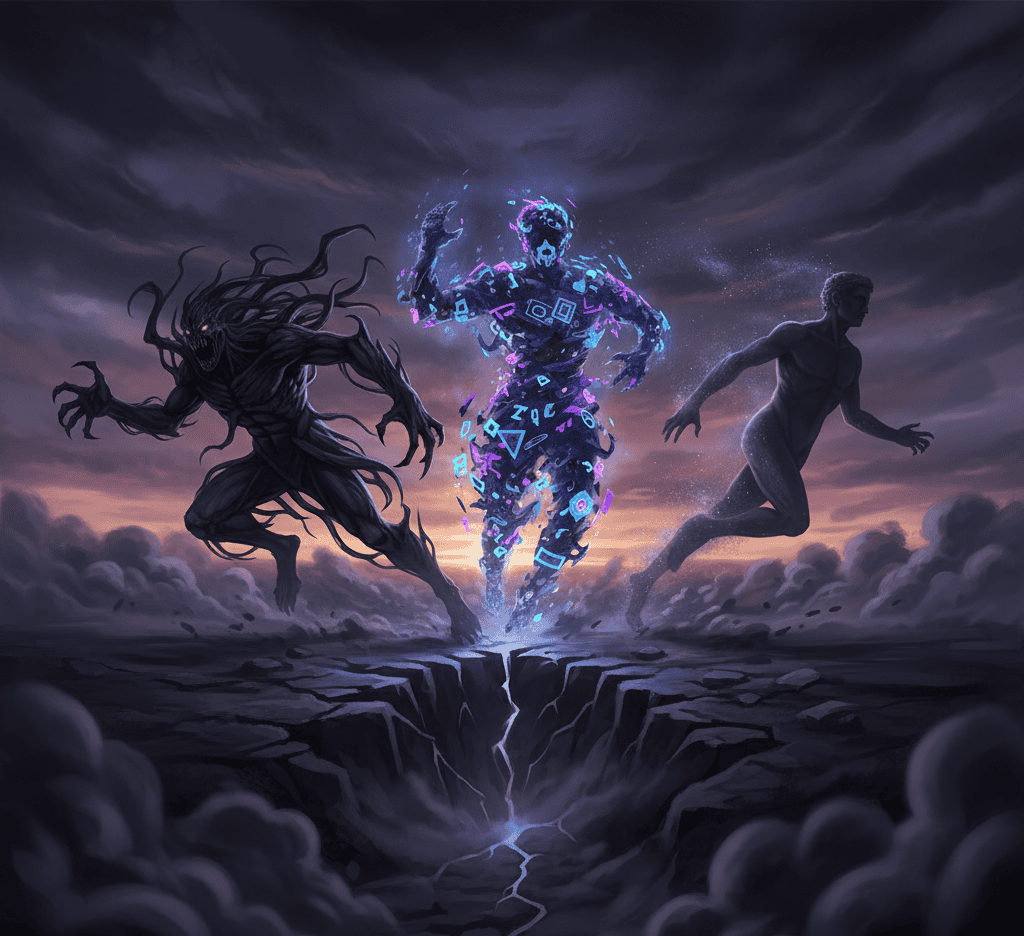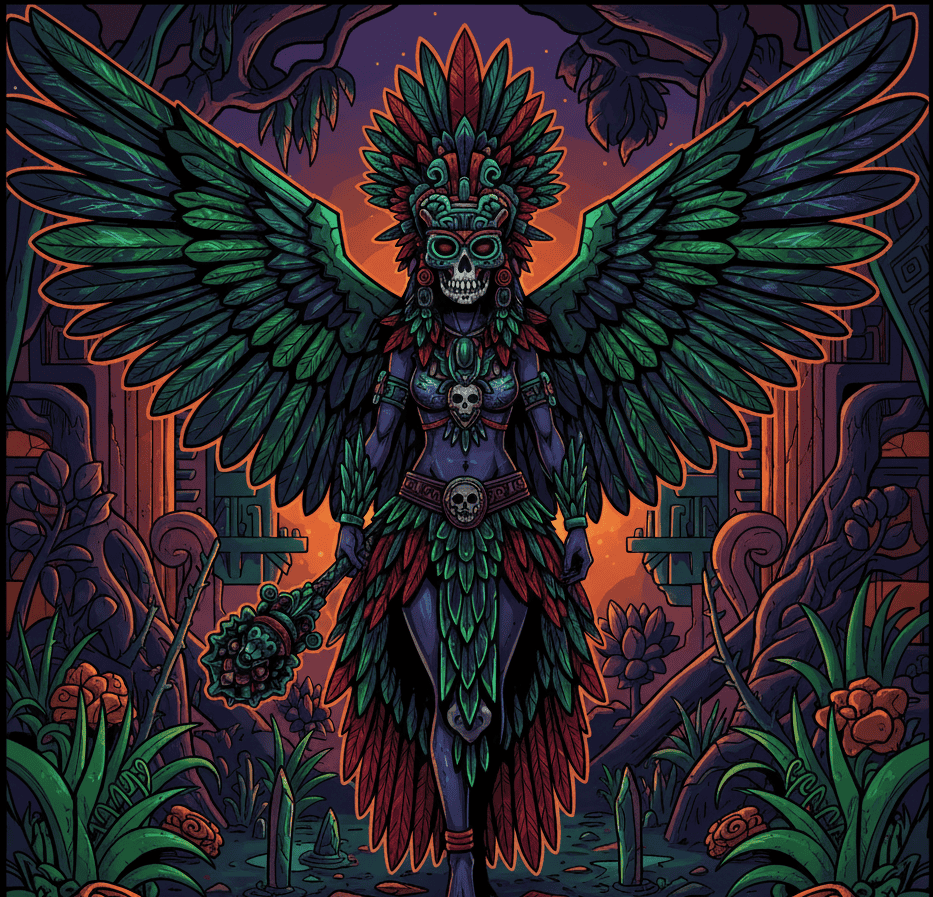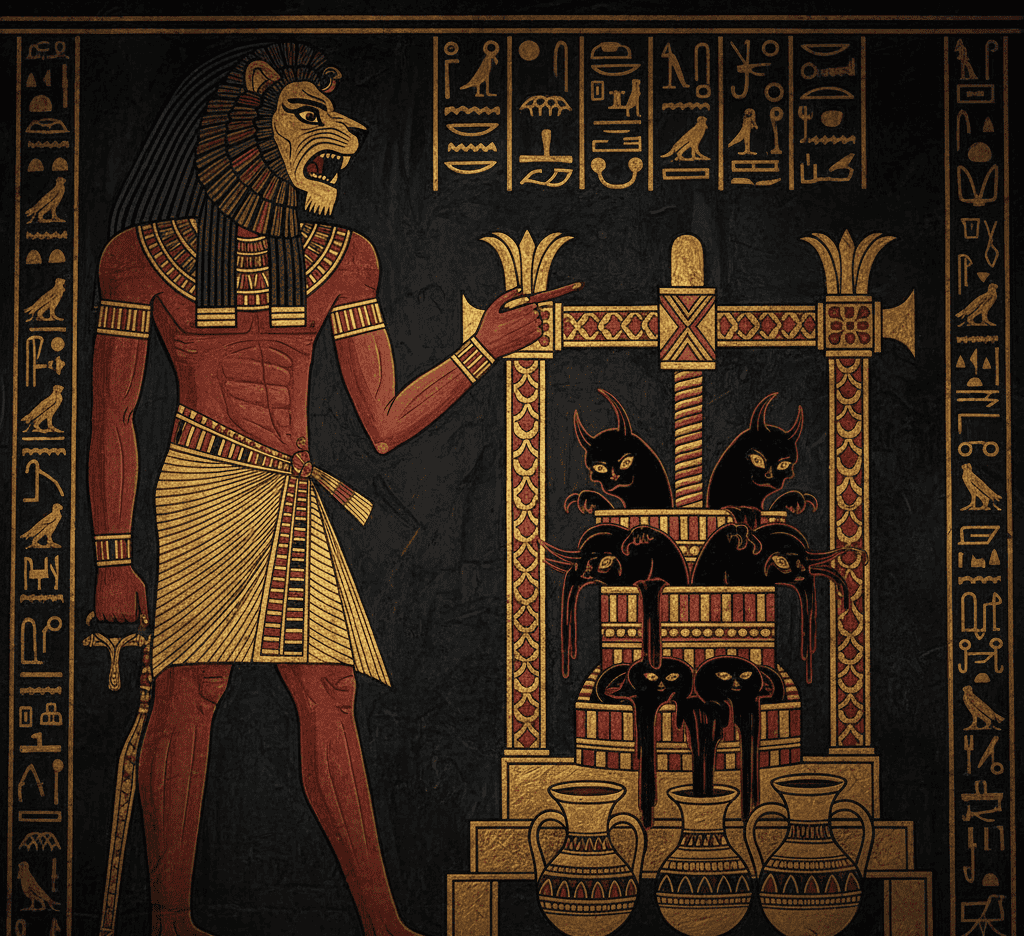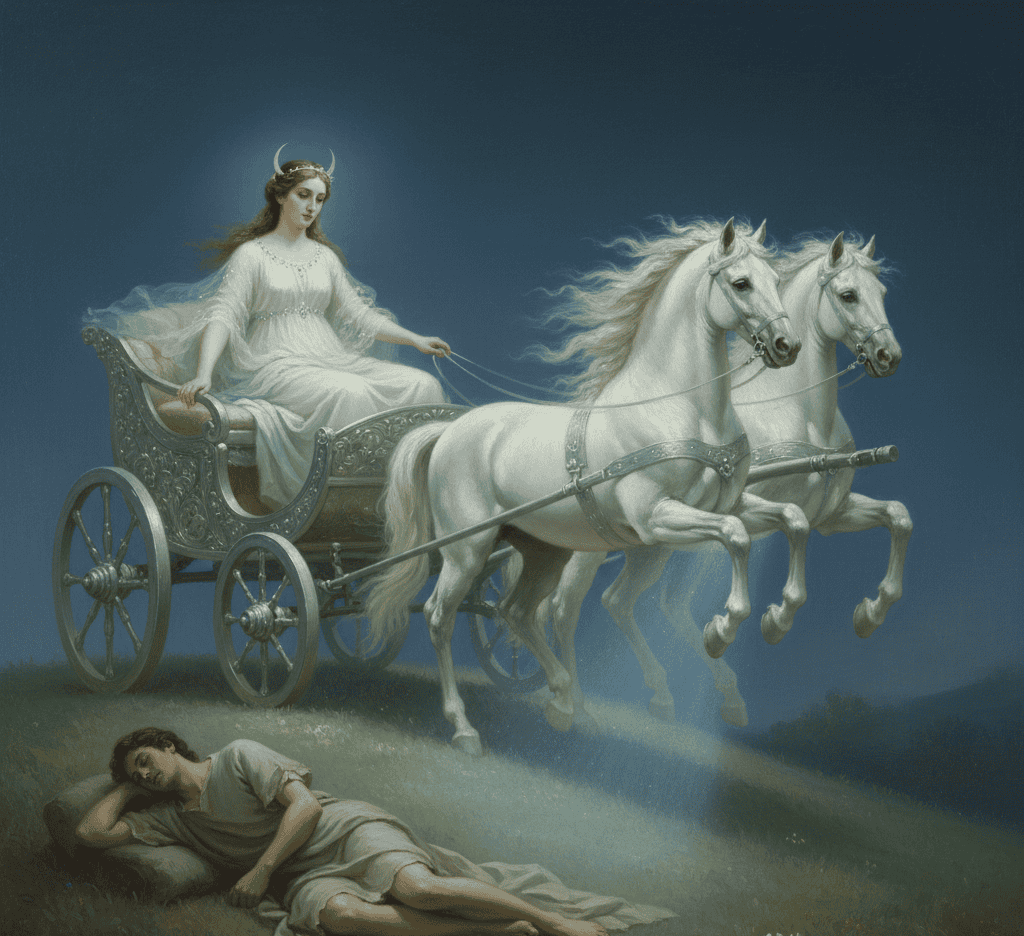When the world grows quiet and the stars take their watch, the night becomes a bridge between reality and mystery.
Ancient peoples believed that darkness was not empty but alive with gods who ruled dreams, shadows, and whispers.
These divine beings moved silently through the sleeping mind, revealing truths, granting visions, or sometimes warning mortals of what was to come.
Here are eight gods and spirits of night and dreams who once brushed the edges of human sleep and shaped what mortals saw when their eyes were closed.
1. Nyx – The Night Itself
Before the world had light, there was Nyx. In Greek mythology, she was the embodiment of night, older than the gods of Olympus and feared even by Zeus.
Nyx did not simply rule over darkness; she was darkness. Her arrival was said to hush the earth and calm the waves, wrapping everything in stillness.
Mortals imagined her sweeping across the sky in a chariot of shadow, leaving trails of starlight behind her.
Nyx’s whispers were the kind that filled dreams with awe and dread, reminding humanity that even the gods once feared the power of night.
When she appeared in visions, it was often as a warning that fate was about to unfold.
2. Morpheus – The Dream Sculptor
Morpheus, son of Nyx, was the god who shaped dreams. His name gave rise to the word “morph,” meaning to transform, and that was exactly his gift.
Morpheus could slip into any dream, taking the form of friends, lovers, or strangers to deliver messages from the divine.
Ancient Greeks believed that when they dreamed of gods or omens, it was Morpheus who carried them across the veil of sleep.
He was not just a messenger but an artist who molded the imagination. Mortals prayed to him before sleep, asking for gentle dreams or glimpses of lost loved ones.
His presence was both comforting and eerie, a reminder that the world of dreams could feel as real as waking life.
3. Hypnos – The God Who Closed Mortal Eyes
Where Morpheus created dreams, Hypnos gave the gift of sleep. He was the twin brother of Thanatos, the god of peaceful death, which made his presence both soothing and unsettling.
Hypnos lived in a dark cave by the river Lethe, the stream of forgetfulness. Poppies and sleep-inducing plants grew around his home, and even the sound of his voice could calm storms.
When he spread his wings, the world grew quiet. In myths, he often helped gods by putting others to sleep, like when he lulled Zeus to rest so Hera could carry out her schemes.
Mortals saw Hypnos as a tender figure who offered rest but also a reminder of how close sleep lies to death.
4. Nótt – The Rider of the Norse Night
In Norse mythology, Nótt was the goddess of night, a figure as vast and cold as the sky itself.
She was said to ride across the heavens in a chariot drawn by her horse, Hrímfaxi, whose foam created the morning dew. Nótt was not feared but respected.
To the Norse, she represented both beauty and inevitability. Every evening she arrived with quiet authority, bringing dreams and reflection.
Her descendants included Dagr, the personification of day, showing how even daylight was born from the night.
When mortals dreamed of battles, ancestors, or the future, they believed Nótt’s hand had guided their visions, steering their spirits through the darkness.
5. Oneiroi – The Spirits of Dreams
While Morpheus was the most famous dream messenger, he was not alone. The Oneiroi were his brothers, the collective spirits of dreams who flew through the night like shadows.
Phobetor brought nightmares, shaping the fears that jolted mortals awake. Phantasos created strange, surreal dreams full of symbols and illusions.
Together, they filled sleep with every shade of imagination, from joy to terror. The Oneiroi were said to emerge from the underworld at dusk, slipping through the cracks of consciousness to weave stories in the sleeping mind.
Ancient temples dedicated to healing dreams, like those of Asclepius, were believed to be places where the Oneiroi lingered, whispering cures through vision and rest.
6. Itzpapalotl – The Obsidian Butterfly of Night
From Aztec mythology came Itzpapalotl, whose name means “Obsidian Butterfly.” She ruled over the paradise of Tamoanchan, the resting place of souls who died in childbirth, a sacred death in her culture.
Itzpapalotl was both terrifying and beautiful, a goddess of night, transformation, and rebirth. Her wings were said to shimmer like blades, capable of cutting through illusion.
In dreams, she appeared to those facing loss or change, guiding them through the shadow between life and death.
To mortals, her whispers brought both fear and peace. She taught that darkness was not to be avoided but embraced, for within it lay the power to transform.
Her cult saw butterflies as her messengers, symbols of the soul’s flight through the night.
7. Shesmu – The Egyptian God of Night Offerings
In Egyptian myth, Shesmu was a complex god of both creation and destruction. By day, he was known for pressing wine and perfume, but by night, he pressed the heads of the wicked to make offerings to the gods.
Though terrifying in imagery, Shesmu was not seen as purely evil. His connection to the night was about purification and truth.
During sleep, Egyptians believed the soul could meet gods like Shesmu in the dream world, where darkness stripped away lies.
Those who dreamed of him might wake feeling both shaken and renewed.
The whispers of Shesmu reminded mortals that the night could cleanse as well as frighten. Beneath his fearsome nature was the message that every shadow hides a divine purpose.
8. Selene – The Moon’s Gentle Guardian
While not a goddess of dreams directly, Selene, the Greek moon goddess, ruled over the rhythm of night itself.
Riding her silver chariot across the sky, she illuminated both the waking and the sleeping world. Her light was said to protect travelers and calm restless hearts.
Lovers prayed to her for intimacy and connection, while dreamers thanked her for gentle visions.
One of her most famous myths tells of her love for the mortal Endymion, whom she placed in eternal sleep so she could visit him each night.
Through Selene, the moon became a symbol of constant presence, a soft watcher over human dreams. Her glow was a promise that even in darkness, there was beauty and tenderness.

私は生まれたときから、常に神との強いつながりを感じていた。作家として、また指導者として、私の使命は、人々が最も暗い時代に愛と幸福と内なる強さを見つけるのを助けることである。

